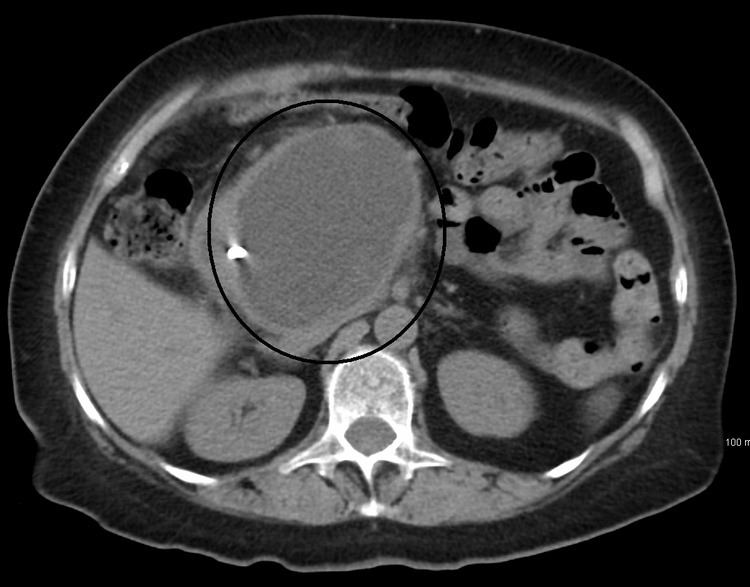Specialty gastroenterology ICD-9-CM 577.2 MedlinePlus 000272 | ICD-10 K86.3 DiseasesDB 9530 eMedicine med/2674 radio/576 | |
 | ||
A pancreatic pseudocyst is a circumscribed collection of fluid rich in pancreatic enzymes, blood, and necrotic tissue, typically located in the lesser sac of the abdomen. Pancreatic pseudocysts are usually complications of pancreatitis, although in children they frequently occur following abdominal trauma. Pancreatic pseudocysts account for approximately 75% of all pancreatic masses.
Contents
Signs
Signs and symptoms of pancreatic pseudocyst include abdominal discomfort, indigestion.
Causes
Pancreatic pseudocyst can occur due to a variety of reasons, among them pancreatitis (chronic), pancreatic neoplasm and/or pancreatic trauma.
Pathophysiology
Pancreatic pseudocysts are sometimes called false cysts because they do not have an epithelial lining.The wall of the pseudocyst is vascular and fibrotic, encapsulated in the area around the pancreas.Pancreatitis or abdominal trauma can cause its formation. Treatment usually depends on the mechanism that brought about the pseudocyst. Pseudocysts take up to 6 weeks to completely form. Sometimes pseudocyst is formed secondary to acute or chronic pancreatitis.
Diagnosis
Diagnosis of Pancreatic pseudocyst can be based on cyst fluid analysis:
The most useful imaging tools are:
Treatment
Pancreatic pseudocyst treatment should be aimed at avoiding any complication (1 in 10 cases become infected). They also tend to rupture, and have shown that larger cysts have a higher likelihood to become more symptomatic, even needing surgery.
In the event of surgery:
Complications
Complication of pancreatic pseudocyst include infection, hemorrhage, obstruction and rupture. For obstruction, it can cause compression in the GI tract from the stomach to colon, compression in urinary system, biliary system, and arteriovenous system.
